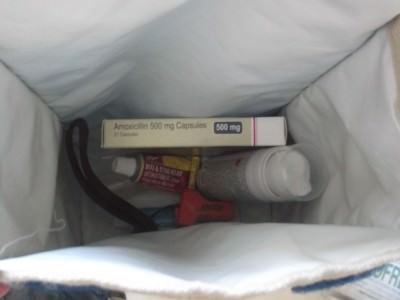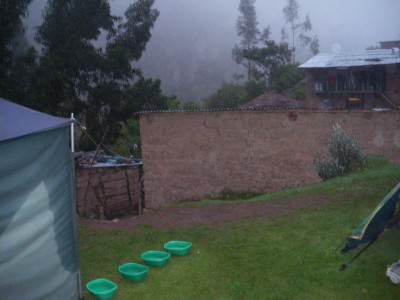Unlike a general survival kit, a “bug out bag” is meant to contain the necessities for survival in a 72 hour period. They are typically kept for the unlikely event of disaster evacuation. Having a bug out bag on hand will allow you to stay alive (important) and healthy (essential) while facing the challenges of leaving the scene of a disaster. Depending on where you live, a bug out bag may be more or less essential to have on hand. As backpackers we all need to carry First Aid Kits and Travel Essentials, so here’s a guide to what is often termed as a “bug out bag”.
If you are travelling or living near a fault line, in an area that has tornados, hurricanes, typhoons or other natural disasters, a bug out bag is critical. Still, if you live in an area that does not get extreme weather, large fires can also occur. This is especially true in dry climates or when there are large forests within a relatively short distance from where you live.
A bug out bag should be considered just one necessary part for disaster evacuation whether travelling or at home. Having a game plan set up for the most likely disasters to occur in your area is very important. For example, evacuation routes and strategies should be considered carefully at some point. It never hurts to read up on the subject of evacuation to learn from the successes and failures of other people who have had the misfortune of living through a disaster.
Bear in mind that you should have a bug out bag prepared to cover each member of your household. There is another option of having a doubled up bug out bag for a couple. The most important thing is that there are enough supplies for each adult and child to survive on during an evacuation of up to 72 hours. While it may seem that evacuation from your area will take a much shorter period of time, 72 hours has proven to be the safe time to bet on. The fact is, in the event of a disaster, there are a large assortment of challenges and delays that will come up as a result to get in the way of evacuation. The sheer fact that all the people who live in the area will be evacuating at the same time is enough to cause massive delays in urban areas. Rurally and in the countryside you won’t have to worry about it.
Still, roads and bridges can be washed out or destroyed or otherwise unfit for travel. Sometimes it boils down to a single highway or footpath that is safe to use for evacuation. In this event, you can expect massive delays even for a very short trip. Don’t cut any corners. The idea behind a bug out bag is to be prepared so, when you put yours together, make sure you are prepared for all these possible scenarios and more.
So, what types of items should you have in your bug out bag? The key thing to remember is the basic necessities for survival. Efficiency for travel is also key, and it’s a good idea to get a container that can be packed tightly and hold a great deal of supplies in a relatively small space. By keeping the necessities down to a 72 hour period, you are also able to carry more essentials with less weight. This allows for a little more comfort during your evacuation period than you would get if using a standard survival kit designated for an indefinite period of time.
1. Water – You must have enough water to last you for 72 hours. Remember that you need water for more than just drinking. Think of all the uses you will go through such as cooking, cleaning, and washing. It’s good to have just a little bit more than you need if you can fit it in the bag.
2. Food – Since the bag will be sitting still for a long time, it’s important to have non-perishable food products ready to go. Freeze dried emergency foods are perfect for this purpose. Make sure they are packaged properly and that you have a 72 hour supply. I always carry fruit, crisps etc.
3. First Aid Kit – This one should go without saying. Make sure it contains bandages, antibiotic ointment, iodine tablets and all of the standard first aid essentials.
4. Matches/Lighter – Being able to start a fire will be critical. Water proof matches are usually the safest bet for this purpose as lighters can cease to function under certain weather conditions. Otherwise, a butane lighter with extra butane can be helpful.
5. Radio – A portable, battery operated radio will help you to get necessary information for safe evacuation. Keep the batteries in a separate compartment and in a moisture free bag. Despite the global phenomenon known as the internet old school FM and AM radios still hold value!
Do take care on your journeys and make sure you are well prepared!
Safe travels.




I’d also recommend a good knife. You’d be surprised how much you use it, not just as a weapon, but for building shelter, digging, first aid, fire, etc. It’s an invaluable tool during a disaster.
Hi guys, good tip when your’e backpacking overland and camping, but unfortunately lots of customs officers, flights and border checks will ban knives and rightly so – dangerous item and better left at home. Safe travels. Jonny
If we’re talking about having to go through customs, a few of us have had our lighters confiscated as well.
Hey guys, thanks for the comment. If it was me, I’d just travel without a lighter. Makes things easier. Safe travels. Jonny